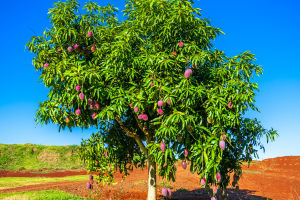From ancient times to the present, the coconut palm has deeply rooted itself in tropical soils, becoming a significant symbol of economy, ecology, and culture in these regions.
Let's explore the world of this "king of plants," delving into its biological features, economic value, ecological roles, and profound significance in human culture and traditions.
1. Biological Features and Diversity:
The coconut palm belongs to the palm family and thrives in tropical and subtropical regions, predominantly across Asia, Africa, and Pacific island nations.
Long feather-shaped leaves, tall stems, spherical fruits, and sparse crowns characterize it. Different varieties exhibit variations in leaf shape, fruit size, and appearance, reflecting their biodiversity.
2. Economic Value and Uses:
The coconut palm is renowned for its rich economic value. Throughout history, people have utilized every part of the coconut palm.
The coconut fruit is edible and used to extract oil and milk; coconut shells and fibers are used in crafts and furniture; coconut wood is used in construction and shipbuilding; even coconut flowers and sap find various uses. The coconut palm is a pillar of the tropical economy.
3. Ecological Roles:
Coconut palms play crucial roles in their ecosystems. They grow rapidly, thrive in poor soils, and absorb significant amounts of water and carbon dioxide. Their root systems help prevent soil erosion and protect coastlines from storms and waves. They also provide habitat and food for numerous wildlife species.
4. Cultural Significance:
The coconut palm holds profound symbolic significance in many cultures, symbolizing life and abundance. In certain communities, coconut groves serve as important venues for social and cultural activities.
5. Growing Conditions and Techniques:
Coconut palms typically grow in coastal areas, known for their tolerance to saline soils. They require ample sunlight and warm climates for healthy growth. Cultivating coconut palms requires specific techniques and an understanding of the environment to ensure good yields.
6. Medicinal Value and Nutritional Components:
Beyond food and industry, every part of the coconut palm has medicinal value. Coconut oil is famous for its medium-chain fatty acids, beneficial for skin and hair health.
Coconut water is considered a natural hydration beverage, rich in electrolytes and vitamins. Various parts of the coconut palm are extensively used in traditional medicine.
7. Challenges and Sustainable Development:
Despite its many benefits and uses, coconut palms face challenges such as climate change affecting their growing environments, threats from pests and diseases, and ongoing improvements needed in management and cultivation techniques.
Sustainable development and conservation of coconut palm ecosystems are crucial for ensuring their long-term utility and value.
In conclusion, as a representative of the palm family, the coconut palm exhibits unparalleled biodiversity and rich economic and ecological values in tropical regions. It supports local livelihoods and plays significant cultural roles globally.
However, as times change and environmental challenges emerge, protecting and sustainably developing coconut palm resources becomes increasingly important. Let us strive together on the path of respecting nature and conserving the environment, ensuring that the coconut palm continues to shine brightly in our lives, contributing its unique strength and beauty to our future.


